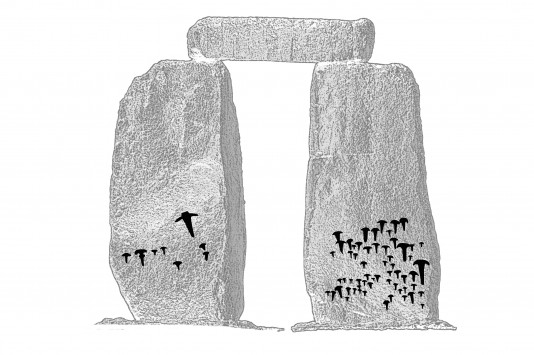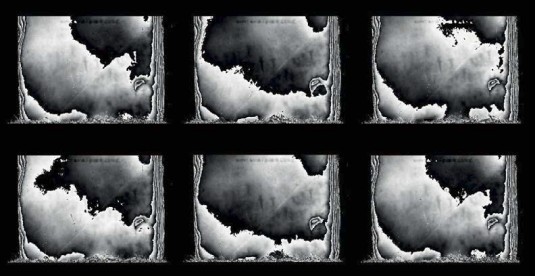Turning 850 gigabytes of 3D scan data into one coherent visualization led to the discovery of 71 carvings.
The UK’s York Archaeological Trust was recently commissioned to use contemporary technology to spatially and digitally record England’s historic Stonehenge. After the team used 3D scanning to gather more than 850 gigabytes of data—shot at 0.5 millimeter point spacing on the entire structure—they needed a way to organize the enormous data pool. It was the process of making the data useful that led to the discovery of prehistoric artwork carved into the stones.

Once the data was gathered, the task of further examining this ancient masterpiece to discover more about it was awarded to ArcHeritage, part of the York Archaeological Trust. Preliminary examination of the meshed models identified individual tool marks over 5,000 years old, but it was evident the data contained more prehistoric artwork carved onto the surface of the stones. The team decided to visualize the original point-cloud data and created a workflow using Bentley Pointools, which provided preprocessing of the point clouds.
The use of Bentley Pointools on this project enabled large datasets to be loaded, facilitating an examination of the full resolution data. The software’s shading function was instrumental in visualizing the most subtle features, which resulted in the discovery of 71 carvings of Bronze Age axes not seen in more than three thousand years.
“We needed a software solution that would handle and visualize vast quantities of survey data,” said Marcus Abbott, a member of the ArcHeritage Geomatics and Visualization team. “Bentley Pointools is capable of loading both 3D mesh and point-cloud data. Furthermore, Bentley Pointools’ full suite of measuring tools and unique visualization tools were crucial to the success of the Stonehenge project. The discovery of unrecorded prehistoric rock art on the stones was first realized in Bentley Pointools.”

The layering and shading functions in Pointools allowed carvings of Bronze Age axe heads and daggers invisible to the naked eye to be visualized, providing sub-millimeter accuracy to the archaeologists.
The discovery of the carvings at Stonehenge was realized through the team’s use of Pointools’ Plane Shading function to create a greyscale band 7.5 centimeters wide. This band was moved at 1-millimeter intervals through the data. As it moved, it created a high-quality rendering of the plane shaded image. The team repeated the process 75 times to complete a full color change for every point in the data. Depending on the position in relation to a preset camera plane, each point was assigned a greyscale value, allowing very subtle features to be visible. When the images were combined into an animation and played back, the carvings, which were invisible to the naked eye, were seen fading in and out.
Abbott says it was only through Pointools’ visualization capabilities that the eroded prehistoric artwork was discovered. Once the extent of the carvings was identified, the team deployed the measuring and point location tools to accurately plot the carvings to the UK Ordnance Survey grid.
To read a case study on the ArcHeritage Stonehenge project, click here






